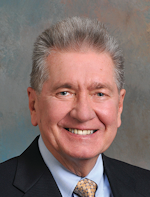To protect the value of the patient and referral source base of any dental practice, noncompete provisions have long been used as a method to ensure that the parties to an employment agreement, associate buy-in, or partnership live up to their promises not to compete.
However, the Federal Trade Commission (FTC) issued the final rule on April 23, 2024 (final rule) that effectively prohibits the use of almost all noncompete provisions. The final rule becomes effective 120 days after publication in the Federal Register.
The final rule
The final rule does contain some exceptions. The first is the exception for the sale of a business. Second, the final rule allows senior executives who are in policy making positions and who earn more than $151,164 annually to remain subject to the noncompetes currently in effect. It does not permit employers to enter into new noncompetes with senior executives.
The final rule allows the use of nondisclosure and nonsolicitation agreements and trade secrets laws for an employer to protect the business, provided the provisions are not broad enough to be construed as a noncompete. The final rule requires that employers provide notice to workers that the noncompetes will not be enforced against them in the future. It includes model language that employers can use to communicate with workers about the nonenforcement.
Although the final rule was passed by the FTC on April 23, multiple lawsuits were immediately filed challenging it that will hopefully be successful, or at least delay the prohibition of noncompetes for a long time.
Considerations for practice owners
An attorney licensed in a practice owner's state should evaluate any existing noncompete provisions to determine when and what steps are needed in light of the final rule. The attorney should consider the use of nondisclosure and nonsolicitation agreements and trade secrets laws to protect confidential information of the practice.
Alternative compensation structures may be a possibility to retain associate dentists. For example, annual bonus programs could be considered subject to the condition that the associate dentist remain employed at the end of the calendar or fiscal year in question.
Longevity- and seniority-based bonuses could also be considered to deter key associate dentists from leaving a practice. However, the dentist and lawyer should be very aware that any arrangement that prevents the employee in question from seeking other employment could be considered a noncompete.
For solo practitioners, remaining solo may be an option, depending on patient demand and practice size. For partnerships, buy-in values may become drastically reduced and departing partners may get very little for buy-out values, but may be permitted to compete.
If the final rule becomes effective, unhappy associates will have the ability to leave an unacceptable employment relationship and join another practice, irrespective of whether the associate is employed by a private or corporate practice.
Family practices should not be concerned with whether noncompetes are prohibited for purposes of estate planning.
The future of noncompetes is unclear, and practice owners should determine the best way to preserve their practice values if and when the final rule is enforced.
Editor's note: This article appeared in the June 2024 print edition of Dental Economics magazine. Dentists in North America are eligible for a complimentary print subscription. Sign up here.









